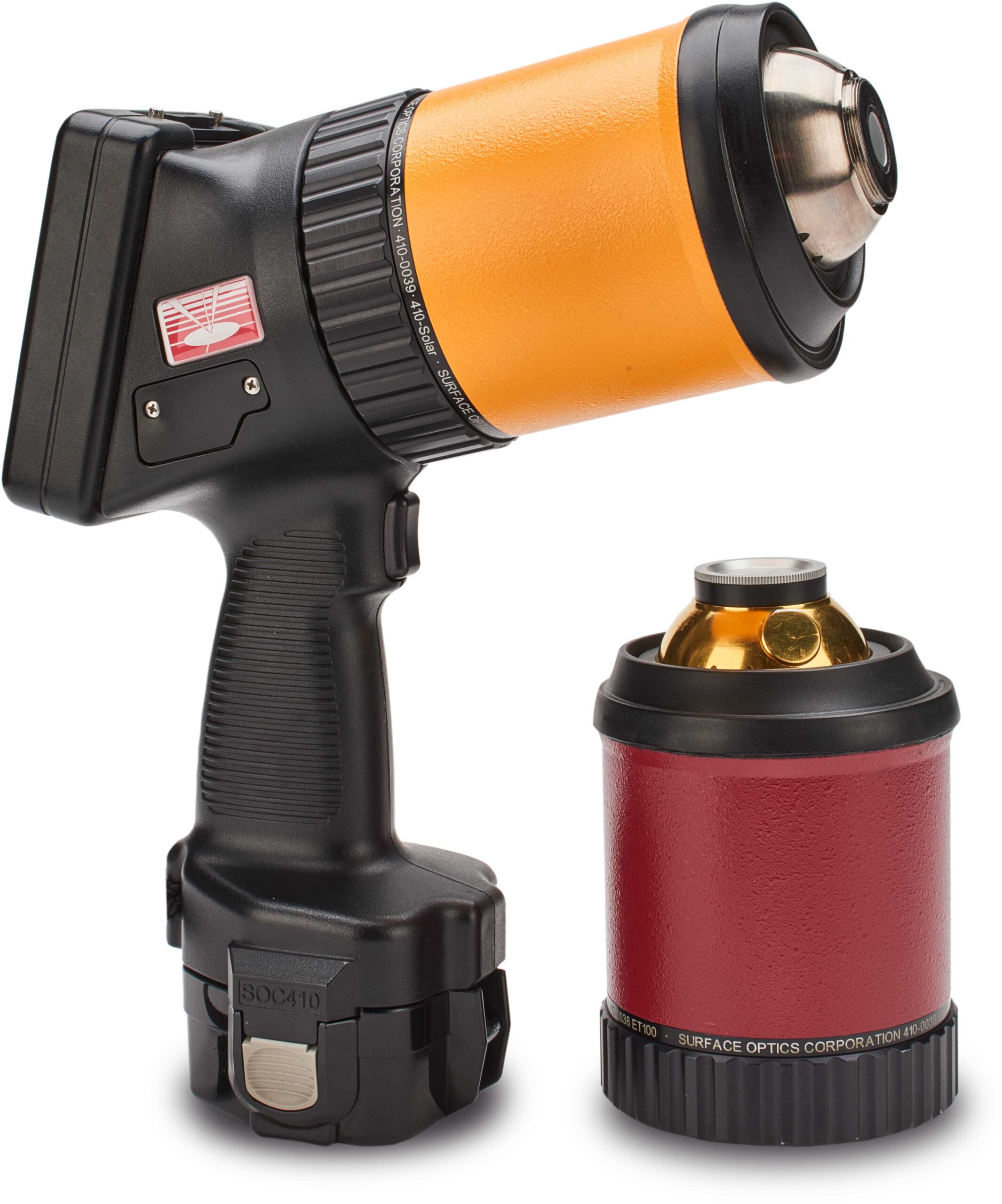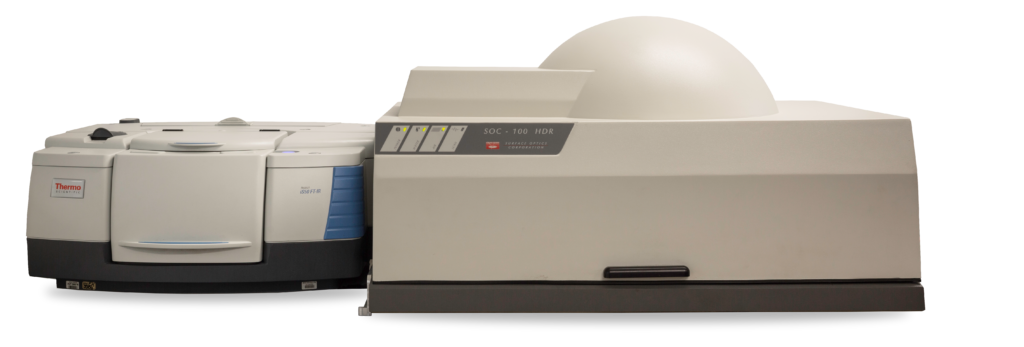Thermal emissivity is a fundamental property of materials that describes their ability to emit thermal radiation normalized to an ideal blackbody (i.e. 0-1 scale). This characteristic is crucial in applications ranging from aerospace thermal coatings to solar energy harvesting to environmentally friendly building materials, where understanding and controlling heat transfer can significantly impact safety, efficiency, and performance. In practical terms, materials with high emissivity effectively radiate heat, while those with low emissivity retain it, making this property essential for thermal management in various industries.

Accurately measuring thermal emissivity has long been challenging due to materials emitting over broad spectral ranges (tens of microns), requiring sophisticated optical instrumentation. However, inaccurate measurements can lead to costly errors and even catastrophic failures. In aerospace, thermal coatings are critical for cooling during hypersonic flight, where overheating can cause severe structural and functional failures in missiles and spacecraft.
Beyond the atmosphere, where convection and conduction are absent, emissivity plays a crucial role in spacecraft thermal management as radiation is the primary mode of heat transfer. In solar thermal energy, selective surfaces with tailored emissivity enhance efficiency by maximizing solar absorption while minimizing infrared re-radiation, a principle also applied in cool roofing to mitigate heat buildup and combat the urban heat island effect. Additionally, emissivity provides valuable insights into material properties, making it essential for research in material science.
This article explores the tools, measurement techniques, and industry standards that define modern emissivity.
Understanding Thermal Emissivity
Definition
Thermal emissivity ε is defined as the ratio of infrared radiation emitted by a material to that emitted by a perfect blackbody at the same temperature. The emissivity value ranges from 0 (perfect reflector) to 1 (perfect emitter). This property describes the amount of energy that is emitted as infrared light and is directly correlated to an object’s retention of heat.
Factors Influencing Emissivity
Several factors affect a material’s emissivity, including:
- Material Type: Different materials (e.g., metals versus ceramics versus cloth) exhibit different emissivity properties due to their unique atomic structures.
- Temperature: Emissivity values can change with temperature variations, particularly in non-metallic materials.
- Surface Roughness: Polished surfaces tend to have lower emissivity than rough or oxidized surfaces because of their reflective properties.
- Wavelength Dependence: Emissivity varies across the electromagnetic spectrum, making spectral analysis essential in certain applications.
Understanding these factors is crucial for selecting appropriate measurement techniques and ensuring accuracy in thermal analysis.
Tools for Measuring Emissivity
Handheld Reflectometers and Emissometers
Handheld emissometers provide quick, in-field measurements of emissivity. These tools are particularly useful for field and industrial applications, which often require portability and real-time data. The ease of use enables measurement of different samples, such as standard 1-inch rounds, solar panels still in the field, or even satellites that are ready to launch. Older models, such as the 400T have been historically used in NASA spacecraft thermal control as replacements to the now outdated Gier-Dunkle DB-100 infrared reflectometer.

SOC-410 Vis-IR, a portable reflectometer capable of providing reflectance, solar absorptance, and thermal emissivity. This operates in the range of 335 nm – 21 microns and is used to calculate values such as α/ε and SRI. The 410 Vis-IR complies with ASTM C1549, E408, E903, and E1980.
Pros:
- Faster Measurement
- Relaxed sample size restrictions
- Easy to use
Cons
- More assumptions made for downstream processing
- Less overall data
- More uncertainty
Laboratory-Based Instruments
For high-precision measurements, benchtop laboratory reflectometers, such as the SOC-100, are capable of measuring emissivity. These setups allow for controlled testing environments and provide comprehensive emissivity data across multiple wavelengths. Oftentimes, benchtop instruments provide spectrally resolved data, which can be essential for certain applications.

Pros:
- Transmission data
- Polarized Measurements
- Specular and diffuse reflectance partitioning
- Angular measurements
- Wide spectra
- Elevated sample temperature
- Higher certainty
Cons
- More complicated procedures
- Slower measurements
- High sample size restrictions
Best Practices for Accurate Measurements
- Choose the right instrument based on application needs.
- Regularly calibrate instruments.
- Prepare and clean samples appropriately to avoid measurement inaccuracies.
- Ensure proper use of the reflectometer and understand limitations.
- Account for temperature and wavelength dependencies.
Applications of Thermal Emissivity Measurements
1. Spacecraft Thermal Management (a/e)
Ensuring spacecraft surfaces highly reflect light and emit heat to prevent thermal buildup.
2. Heat Mitigation in Buildings (SRI)
Evaluating emissivity of paints and building materials to avoid heat accumulation.
3. Defense and Aerospace
Measuring the IR signature of low-observable paints and coatings.
4. Semiconductors
Assessing thermal emissivity of wafer fab hardware.
How Surface Optics Supports Emissivity Measurements
Surface Optics Corporation provides industry-leading optical instruments, offering both portable and benchtop reflectometers. These tools ensure precise emissivity measurements in compliance with industry standards. With a wealth of expertise, our lab services help thermal and materials engineers obtain accurate, reliable data.
If you are looking to improve your thermal emissivity measurements or have any questions about thermal emissivity, reach out to our team at contact@surfaceoptics.com.
Question about thermal emittance measurements?
Contact our team today!
